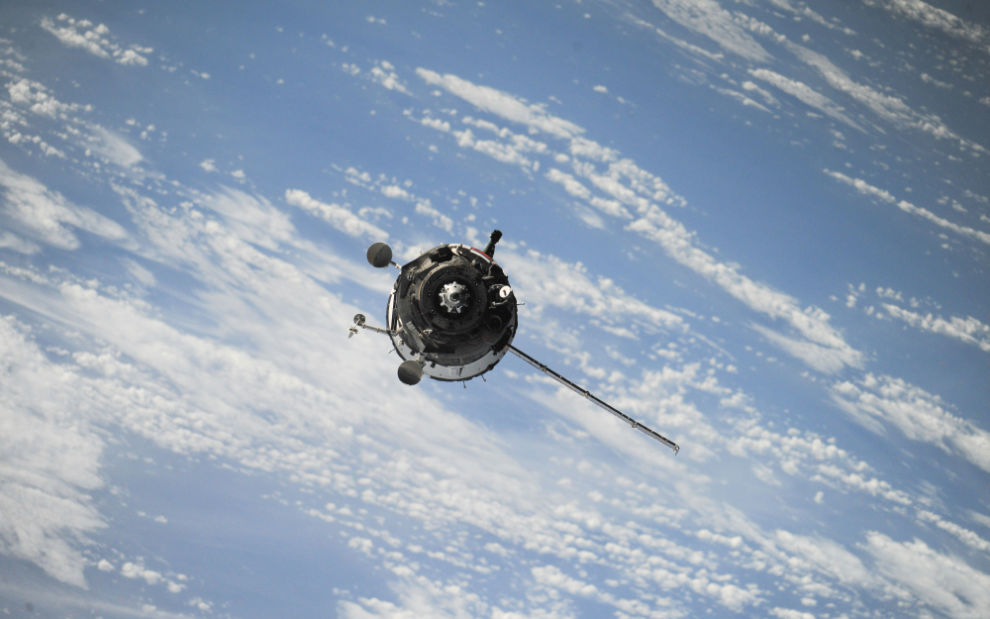Not content with creating mountains of fast-fashion throwaways that are visible from space, we earthbound folks are taking to our near heavens to find brave new worlds on which to dump our stuff. Our big blue marble in space is encircled by more than 9,000 satellites and 25,000 pieces of space junk. Thousands of satellites, entire space stations among them, have already returned to Earth since the satellite era began with Sputnik in 1957.
The space race to add more satellites and inevitably much more orbiting debris is only accelerating as more nations and private industries seek strategic and commercial footholds off-planet. By 2030 there could be as many as 50,000 satellites circling the globe and 10,000 fiery reentries each year, Scientific American reports.
One company alone, SpaceX’s Starlink, now accounts for almost half the satellite traffic. SpaceX has an ambitious schedule for future deliveries to its orbiting communications fleet. But what goes up must come down, sometimes sooner than expected.
In February, SpaceX announced that it would prematurely “deorbit” about 100 of its 5,500 or so satellites after discovering a design flaw that could make them a collision threat, raising the specter of the dread Kessler effect, a catastrophic wave of satellite collisions. A Kessler-level event would create an impenetrable wreckage field preventing future satellite deliveries, a devastating loss to us earthbound folk who have become thoroughly reliant on the host of communications, positioning services, and research functions maintained by satellites.
The debris currently encircling the planet—even now forcing the International Space Station to take evasive actions at times—is the result of decades of launches and assorted miscellaneous explosions and collisions that leave space litter behind sometimes for a long time. According to NASA’s Orbital Debris Program, many pieces of space litter—those speeding just 600 kilometers above us—will fall back to Earth within a few years. But at “altitudes of 800 km, the time for orbital decay is often measured in centuries,” and above 1,000 kilometers, orbital debris will circle Earth “for a thousand years or more.”
Beyond creating collision hazards for future launches, the high-flying debris may pose other significant hazards we are just beginning to appreciate.
Most of the detritus falling back to Earth burns up in the atmosphere. In a series of high-altitude research flights in 2023 conducted by the National Oceanic and Atmospheric Administration, researchers discovered vaporized residue of many of the metals commonly used in rockets and satellites accumulating in Earth’s stratosphere. What effect this will have on the fragile ozone layer and the potential impact on climate remains to be determined, but one issue is certain: More vaporized satellite and launch metals are sure to accumulate as more satellites are delivered to orbit and the inevitable deorbiting of older satellites, intentional or otherwise, continues.
For years humankind has blithely accepted its single-use plastic lifestyle as a cost-free convenience. But it turns out all that plastic degrades but does not decompose, collecting in water sources and the environment around us and eventually accumulating as microplastics in every human body. We are only beginning to discover the health and environmental threat posed by our era of microplastic contagion.
It could be that we are just as blithely beginning a new era of atmospheric contamination that may one day soon be understood as a similar health and environmental risk. In Laudato Si’ (On Care for Our Common Home), Pope Francis urges us to cast a critical eye to the earth below us to understand our responsibility to protect and preserve the gift of creation. Now we need to turn our eyes upward to the heavens not just in prayer but in acknowledgment of an obligation to keep near space beautiful as well.
This article also appears in the May 2024 issue of U.S. Catholic (Vol. 89, No. 5, page 42). Click here to subscribe to the magazine.
Image: Unsplash/NASA














Add comment